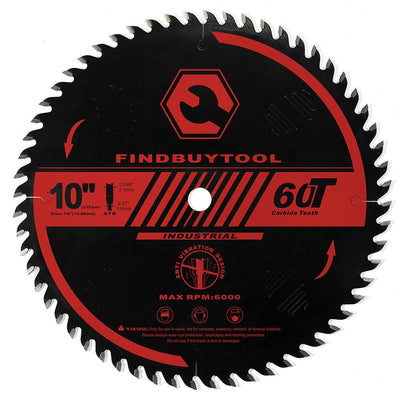What Is The Best Saw For Diy Wood Projects?
Finding the Perfect Saw for DIY Wood Projects: A Guide to Making the Right Choice
Choosing the best saw for DIY wood projects can be overwhelming, especially with the variety of options available. Each type of saw is designed for specific tasks, and selecting the right one can make all the difference in ease, efficiency, and quality of your work. Whether you're building furniture, framing a new room, or crafting smaller items, the right saw helps you achieve professional-level results with minimal effort. For DIY woodworkers, a few saws stand out as essential tools, combining versatility, precision, and ease of use.
The circular saw is one of the most popular and versatile options for DIYers. Compact and powerful, this handheld tool is perfect for making long, straight cuts in various materials, including plywood, hardwood, and even metal with the right blade. Circular saws are easy to handle and great for both rip cuts (along the wood grain) and crosscuts (across the grain). With the right blade and an adjustable depth setting, a circular saw can handle a wide range of DIY tasks, from cutting boards for shelves to trimming door frames. Cordless models are available, adding flexibility and mobility, making them a fantastic option for DIYers who need a powerful, multi-purpose saw.
The miter saw is another essential tool for DIY projects that require precision in cutting angles. Designed for crosscuts and miters, this saw is ideal for making precise, angled cuts in wood and trim, which is especially useful for framing, molding, and baseboards. Compound miter saws allow both bevel and miter cuts, making them versatile for any project requiring angled cuts. For furniture making, a miter saw provides the accuracy needed for cutting joints, such as those in picture frames or cabinets. The sliding miter saw expands this functionality further by allowing the blade to slide back and forth, giving it a longer reach for cutting larger boards. With its precision and efficiency, the miter saw is invaluable for DIY woodworkers who want clean, accurate cuts every time.
For intricate cuts and curves, the jigsaw is the go-to choice. This handheld saw's fine blade allows for precise cuts on detailed projects, such as decorative woodwork, cutting patterns, and shaping wood. A jigsaw's flexibility makes it ideal for cutting curves and circles that would be challenging with a straight-bladed saw. It's also excellent for cutting thin materials like plywood or even softer metals. Many jigsaws come with variable speed control, allowing for adjustments based on the material and type of cut. With a range of available blades for wood, metal, and plastic, the jigsaw is one of the most versatile saws for DIY projects, offering creative freedom that more rigid saws cannot provide.
A table saw is another excellent option for serious DIYers looking to expand their capabilities. Known for its stability and power, the table saw is ideal for making long, straight cuts with unmatched accuracy. Unlike handheld saws, a table saw allows wood to move across a stable blade, creating precise, even cuts ideal for cabinetry, furniture making, and any project requiring accurate dimensions. Table saws excel at ripping wood to specific widths, a task that would be challenging with a circular saw. While they take up more space and require a designated workspace, a table saw can be a worthy investment for those working on larger or more complex projects.
For finer cuts and high levels of precision, especially with smaller pieces, a handsaw or coping saw can be valuable additions to a DIY workshop. Though they lack the power and speed of electric saws, handsaws offer control and are ideal for fine-tuning details or making small adjustments. Coping saws, with their narrow, thin blade, are particularly useful for cutting intricate curves and for tasks like dovetail joints or decorative edging on wood. Many DIYers find that having a good-quality handsaw is useful for quick cuts, especially for small projects or when power tools are unnecessary.
Reciprocating saws are another option worth considering, especially for demolition or remodeling work. With a powerful, reciprocating (back-and-forth) blade, this saw can cut through wood, metal, PVC, and other materials. Often used in construction or renovation, the reciprocating saw is ideal for removing old materials, cutting through studs, or handling larger pieces of lumber. While it's less precise than a circular saw or jigsaw, it's a versatile, heavy-duty tool for tasks that require rough cuts. This saw is especially useful for DIYers who frequently work on remodeling or demolition projects.
Each type of saw has unique strengths, and the best choice depends on the specific needs and scale of the DIY projects. For general-purpose work, a circular saw provides a balance of power and portability that's hard to beat, while the precision of a miter saw is invaluable for framing and finish work. A jigsaw adds flexibility for intricate designs, and a table saw offers stability for larger, more precise cuts. Additionally, investing in a handsaw or coping saw allows for fine-tuning and attention to detail.
Selecting the right saw is all about aligning your needs with the tool's capabilities. For many DIYers, having a combination of saws - like a circular saw, miter saw, and jigsaw - covers most project requirements, offering versatility, efficiency, and precision. With these essential tools, DIY woodworkers can tackle a wide variety of projects, knowing they have the right saw for every cut.

